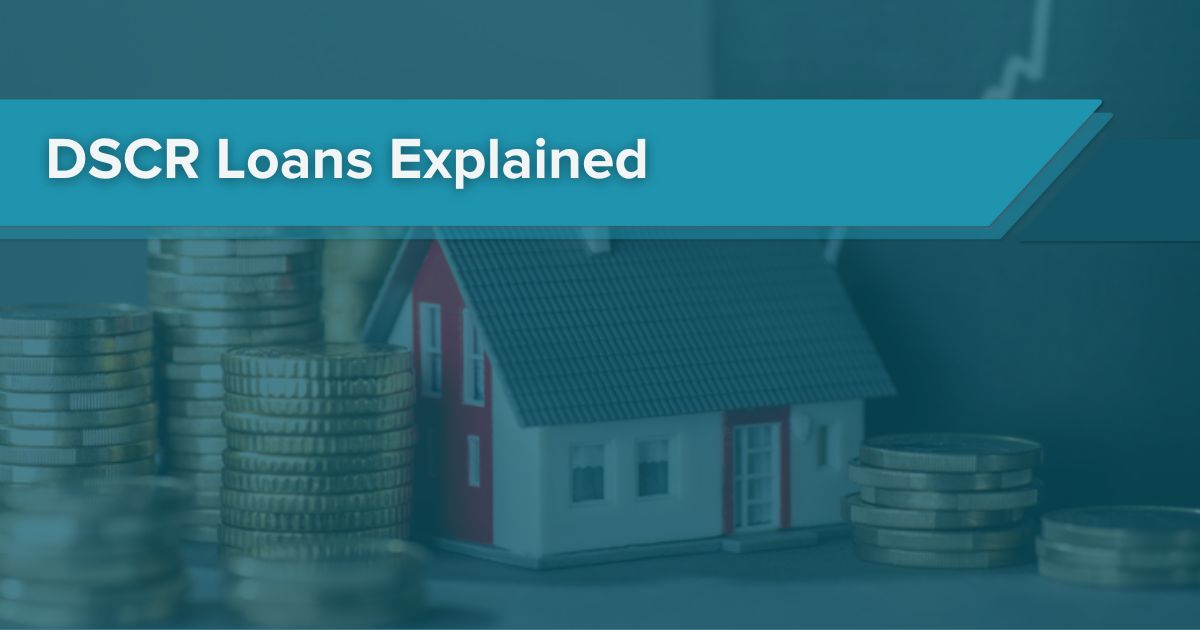One of real estate investing’s first hurdles to individual entrepreneurs is funding – as the saying goes, “It takes money to make money.” But, for many would-be real estate investors, finding initial financing to kickstart or extend a real estate portfolio is complicated and becoming harder as legacy lending institutions increasingly have stricter risk assessments and more stringent lending requirements. If they lend at all.
To fill the funding gap, private lenders offer a range of products to begin building your real estate investment portfolio. One of the most common and popular products is the DSCR loan, which assesses loan viability based on the property itself as much as your creditworthiness.
What is a DSCR Loan?
A DSCR loan is, in most respects, the same as a mortgage on any standard residential rental investment property with one key difference. Rather than poring over the prior year’s tax filings to determine whether your income level supports monthly payment terms. The lender uses the property’s rental income (cash flow) and liquidity to assess whether the borrower will be able to sustain the payment schedule.
Essentially, the lender asks, “Does this property generate enough monthly cash flow to meet principal, interest, and escrow requirements?”
Your lenders calculate the property’s debt service coverage ratio (DSCR) to determine whether it generates enough cash flow. The ratio assesses whether the property’s monthly income (coverage) is enough to meet mortgage payments (debt service).
Calculating Your DSCR
As a quick loan risk indicator, the DSCR is easy to calculate:
Debt service coverage ratio DSCR = Monthly Operating Income / Monthly Loan Payment
Still, there are a handful of additional calculations you’ll need to work with the lender to break down each variable further. Within monthly operating income, you’ll need to deduct standard expenses from the resident’s monthly rent payment, including:
- Property management fees, if applicable
- Cash set aside for repairs and maintenance (a good rule of thumb being 1% of the property’s value annually)
- Any utilities included in the rent
Likewise, your monthly loan amount will include the lender’s principal and interest payments, insurance, property taxes, and homeowner’s association fees (if applicable).
Here’s how that breaks down in real life:
DSCR Calculation Example
Our borrower wants to add a rental property to his overall investment portfolio and needs a rental property loan. The property in question is a duplex worth $410,000, operates in a robust rental market, and has existing tenants in both units with an excellent history of on-time payments and demonstrated willingness to increase rent alongside market pricing.
The borrower is exploring multiple options, but his salary isn’t enough to satisfy traditional banking requirements for an additional residential mortgage (he already owns a home with a standard mortgage). He’s working with a hard money lender to hammer out the details of a DSCR loan while enjoying other benefits of working with private lenders, such as quicker closing windows and fewer documentation requirements.
The lender is willing to offer a 6.750% interest rate, of which:
- $2,660 is dedicated toward principal and interest
- $861 goes into escrow to cover taxes and insurance
Monthly payment total: $3,521
The property’s monthly rental payment (per unit) sits at a market standard of $2,240, generating $4,480 in monthly gross income. Remember, though, that we’re looking at operating income rather than gross, so we need to deduct:
- $340 monthly for repairs and maintenance (1% of the home’s value, divided by 12)
- $80 for municipal water, sewer, and trash costs (the tenants pay electricity and Internet independently)
- $358 paid to the anticipated property management firm, which charges 8% of the monthly rent collected.
This leaves our borrower with $3,702 in operational income for a debt service coverage ratio of 1.05:
1.05 = $3,702 (Monthly Operating Income) / $3,521 (Monthly Loan Payment)
Hard money lenders’ DSCR requirements vary, and they must account for other factors like credit score and rental management experience. As a rule of thumb, anything above 1.2 is ideal, while 1 is the bare minimum (since that represents a 1-to-1 match of monthly income-to-mortgage payment). Most lenders won’t lend below 1.10 without a substantial down payment, if at all.
In this case, our borrower is barely above water, so he may consider dropping the management firm and self-managing to increase his DSCR to a more favorable 1.15.
How does the DSCR Compare to Other Lending Metrics?
The DSCR differs from traditional lending metrics like the debt-to-income ratio (DTI) in that it focuses on cash flow rather than the debt payment itself. Since the property in question is an income-producing investment rather than a primary residence, emphasis is placed on increasing income rather than reducing debt payments.
Hard money and alternative lenders tend to be more flexible than traditional institutions, but there’s a limit. Though standard mortgage brokers may work to bring your debt payment down to improve your DTI, the DSCR’s monthly mortgage payment is likely already as low as is practicable for the lender. Therefore, increasing income (whether through rent increases or expense reductions, as in this example) tends to be the best way to improve a DSCR.
Benefits (and Drawbacks) of a DSCR Loan
DSCR’s benefits compared to traditional mortgage lending are apparent from the outset. By focusing on an investment property as an investment property, the lender’s goals and expectations align more closely with your plans and ideal outcome.
Likewise, hard money lenders offering DSCR loans tend to have decades of institutional experience across various market conditions. By assuming a DSCR loan from one of these reputable sources, you’re also gaining access to expertise and knowledge that can make your investment property journey more streamlined than it may otherwise have been.
And, of course, working with these types of lenders is inherently more intimate and personal than being a faceless name on a big broker’s Excel spreadsheet and experiencing the hassle of having your loan sold repeatedly throughout the mortgage’s lifecycle. They also tend to be faster in assessing and closing loans, a key benefit as the real estate market begins heating up again.
That isn’t to say there are no drawbacks, though. Compared to other financing options, DSCR loans:
- May have hefty down payment requirements and demand a cash reserve be set aside to cover contingencies.
- Are solely intended to cover investment properties, so you can’t live in the home – including, in most cases, circumstances in which an owner wants to live in a unit within a multifamily property.
- Don’t cover some properties, including manufactured homes or larger multifamily properties. At the same time, if your DSCR is less than the lender’s preferred number, they may be less amenable to lending against a value-add property.
Conclusion
Ultimately, DSCR loans unlock real estate investment opportunities for average investors. While real estate’s income-producing sector has been, in years past, dominated by institutional interests and high-net-worth individuals, DSCR loans level the playing field by accounting for the property’s cash flow potential more than just your salary and income.
Ready to see if a DSCR loan is suitable to kickstart or extend your real estate investment portfolio? Even if you’re still shopping around for the best option, reach out today to see how you could join the thousands of real estate investors nationally who trust ABL with their financial future.







0 Comments